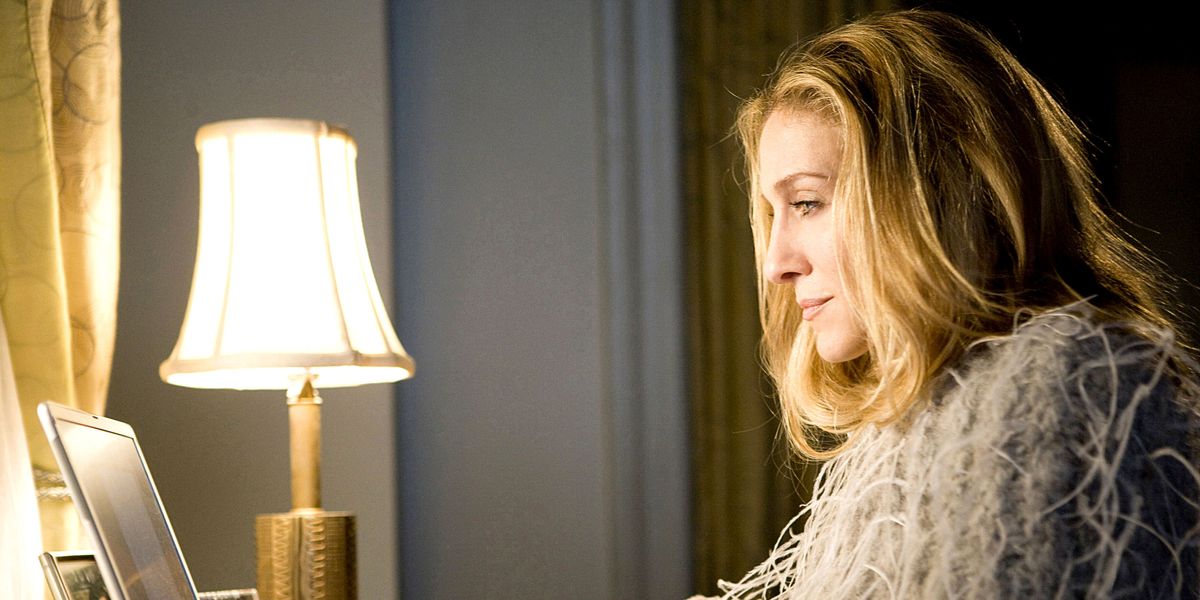Products You May Like

©New Line Cinema/Courtesy Everett CollectionEverett
For as long as I can remember, I’ve admired the way writers dress. Good style, it seems, by measure of the frequency with which it appears, is a trait practically essential to those who achieve prolific careers in publishing. Who would not fall as infatuated with Kathy Acker in her leathers as they would for her irreverent prose? Same for Patti Smith, so gothic and uncouth at first impression, and James Baldwin, immortalized through his essays and his clothes as enduringly debonair.
Though particulars vary widely between personalities, most writers tend to package their iconic literary sensibility into a unique personal aesthetic. Consider Jack Kerouac—could he have written On the Road in anything less American than a gingham button-down and medium wash denim? And would Sylvia Plath, hugely responsible for the popularity of modern poetry, have seduced her audiences without her mid-century sensibility, in outfits simultaneously kitsch, adorable, and impossibly chic all at once?
I suspect these icons were part of my initial attraction when pursuing my career: I like shoes and pretty dresses, and I like people that like them, too. Fashion and writing, though distinct and separate industries, often find themselves intertwined, even married. Many writers begin their careers writing for magazines, which feature glossy advertisements for designer fragrances and spreads of ready-to-wear collections. Others model, such as Arthur Miller in khakis for Gap and Joan Didion pouting in oversized sunglasses for Phoebe Philo’s Celine.
Because workers are historically identified by their uniforms, it makes sense that those outside of the industry would assume that, because famous writers once dressed well, the industry pays rates that are able to sustain that. Suffice it to say: It definitely does not anymore, though at one point it did. Occasionally I hear hushed whispers, as if in a state of disbelief, of fairytales long ago when writers were flown off to islands to work on their manuscripts, given company charge cards with unlimited budgets, and asked to return only when they had developed something polished and ready for print. Even in fiction 20 years ago, long after the ‘50s and ‘60s (the publishing industry’s earlier heyday), the job was still characterized as outrageously lucrative: Carrie Bradshaw freelanced for Vogue at a now-unheard-of rate of $4 a word.
Yet the industry I write for today is remarkably different than the one that existed before: per-word rates for writers fluctuate wildly; I have been offered a range between ten cents and a dollar a word. Adjusted for inflation, this is merely a fraction of what writers were making a century ago, while other standards in the industry have continued to decline and costs of living compound and increase.
As new media infiltrates popular culture, traditional publishing withers, and writers’ livelihoods become more and more precarious as a result. When publications shutter, staffers are laid off en masse, while freelancers work for lower and lower rates without benefits. Battling a client for payment is not an uncommon rite of passage for early-career writers, nor is being coerced into signing away future rights to one’s work under threat of not publishing it at all.
As our culture lurches towards image consciousness in an era where anyone can be a hybrid writer-fashion blogger-Instagram influencer, one might assume that writers’ closets would mimic this sensibility in keeping with earlier traditions. Some of them do: Hari Nef, Tavi Gevinson, and Lindsay Peoples Wagner dress impeccably, though they and public figures like them, whose professional lives exist at the intersection of fashion and media, are exceptions and generally not the rule. Most of the writers I know struggle to make ends meet, making it much less likely that their hard-earned income can support a frivolous habit of regularly purchasing designer clothes.
Under capitalism and in a society as materialistic as America, so much of our personal branding influences the way we are perceived by the outside world. The way we adorn ourselves reflects both the current material conditions of our lives and the future lives we aspire to lead. But because writers’ wardrobes are increasingly subsidized outside of their writing instead of because of it, those who dress best mislead readers about the realities of working in an industry in rapid decline. Therein lies the paradox.
Popular culture has not caught up to this insider knowledge; neither has our collective consciousness. Because writing is a job that’s well-respected, people outside of the industry often expect that it is fair-paying, too. But the reality is that writing isn’t the glamorous profession it once was, nor is there any promise that it ever again will be.
Access to good fashion is a workers’ issue in both the most frivolous and practical sense of the term; it necessitates capital available for leisure, pleasure, beauty, and fun—an aspiration behind the practical reasons why most people show up to work every day: to make ends meet. But in an industry as wildly unregulated as this one, writers are increasingly forced to make sacrifices in order to make rent, support their loved ones, and pay their bills on time. When there is any money left over, it is unlikely that it goes toward clothing.
Still, I find myself motivated by a sense of nostalgia for this earlier era: I still spend a huge portion of my salary on clothes, and dress the way I imagine a writer of my kind might like to appear. In this job largely eschewed by smoke and mirrors, perhaps the most ambitious and irreverent among us continue to outfit ourselves out of a sense of moral obligation. My hope is that the industry turns around so we can dress beautifully again; it is a cultural and moral imperative, lest this tradition become the next part of our industry to die and one we soon forget.
This content is created and maintained by a third party, and imported onto this page to help users provide their email addresses. You may be able to find more information about this and similar content at piano.io
